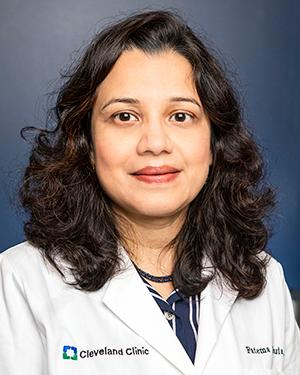Fatema Ghasia Laboratory
-
Fatema Ghasia Laboratory
- Principal Investigator
- Research
- Our Team
- Publications
- Careers
Research
The Fatema Ghasial lab utilizes visual psychophysics, eye movement recordings, electrophysiology and neuro-modulation to understand the mechanistic underpinnings of visual function deficits in neurodevelopmental and neurodegenerative diseases.
Biography
Coming soon.
Education & Professional Highlights
Appointed
2012
Fellowship - Duke University Medical Center
Pediatric Ophthalmology
Durham, NC USA
2012
Residency - Barnes-Jewish Hospital/Washington University School of Medicine
Ophthalmology
St. Louis, MO USA
2011
Internship - St. Mary's Health Center
Internal Medicine
St. Louis, MO USA
2008
Medical Education - Washington University School of Medicine
Pediatric Ophthalmology & Strabismus
St. Louis, MO USA
2007
Medical Education - Washington University School of Medicine
Ocular Motility
St. Louis, MO USA
2005
Medical Education - Maharaja Sayajirao University of Baroda Faculty of Medicine
Vadodara Gujarat,
2002
- Ophthalmology
Research
A primary focus of our lab is to understand the role of abnormal neural circuits that drive the visual function deficits observed in strabismus, amblyopia and nystagmus and to investigate newer treatment strategies.
One of the goals of the lab is to use eye movements as an objective tool that can be useful for diagnosis of abnormal eye oscillations and nystagmus. We have published several papers describing strabismus and abnormal eye oscillations in a variety of neurologic diseases such as ataxias, cerebellar atrophy, stroke and Parkinson’s Disease. We have designed customized friendly infra-structure that allows us to measure eye and head movements in young children including infants and toddlers. The recent work from our lab has shown that eye movement recordings could be a useful adjunct tool in management of strabismus and amblyopia. We are also developing AI algorithms that can be trained on the visual functions and objective eye movement data that can facilitate diagnosis.
A second overarching goal it to identify disease biomarkers that can explain the variable treatment response post strabismus surgery and amblyopia treatment. The work from our lab has shown that patients with certain eye movement abnormalities for example patients with latent nystagmus are more likely to have suboptimal treatment response. We also have cutting-edge equipment that allows us to measure eye movements in children under dichoptic environment to better understand the variable response with newer amblyopia binocular treatments.
Our Team
Selected Publications
View publications for Fatema Ghasia, MD
(Disclaimer: This search is powered by PubMed, a service of the U.S. National Library of Medicine. PubMed is a third-party website with no affiliation with Cleveland Clinic.)
Careers
Training at Lerner Research Institute
Our education and training programs offer hands-on experience at one of the nationʼs top hospitals. Travel, publish in high impact journals and collaborate with investigators to solve real-world biomedical research questions.
Learn More